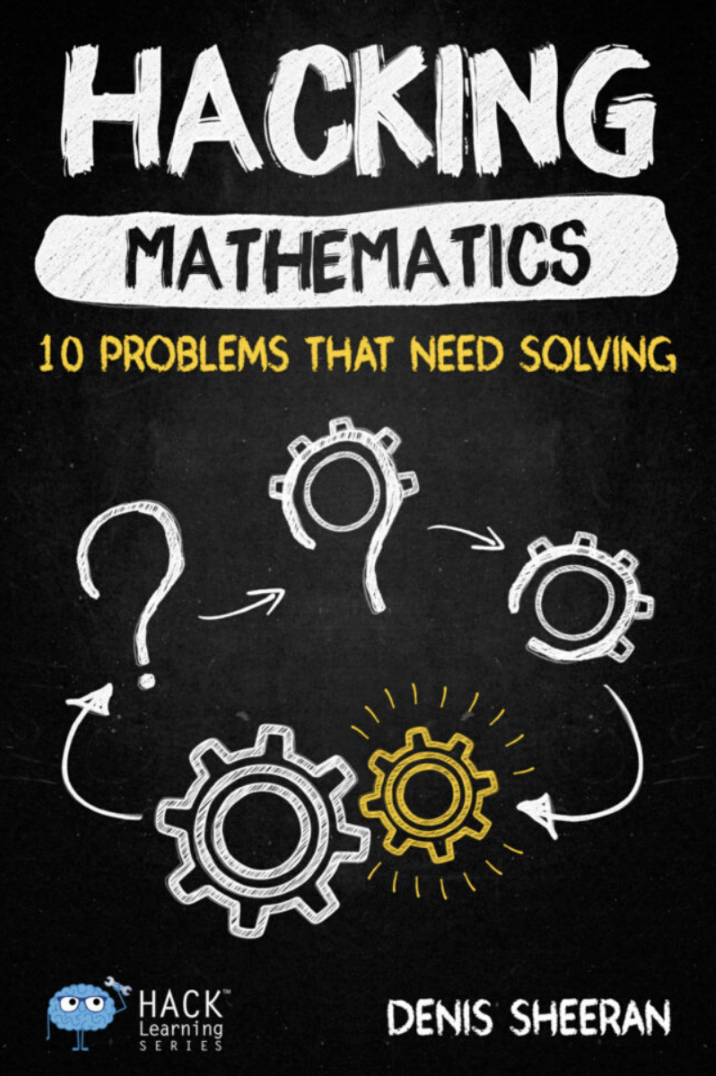Homework Is Not Helping: How To Help Students Retain New Math Concepts
Oct 05, 2021
You’ve probably heard of the song by The Notorious B.I.G., “Mo Problems, Mo Money.”
It’s an a cappella choral piece that poetically shares the scientific evidence that backs the claim that the amount of math homework students do per day directly impacts the students’ salaries over their lifetimes.
If you haven’t heard the song, that’s because it doesn’t exist, and neither does the research.
What does exist is research that shows traditional math homework (a certain number of problems assigned nightly, after a lesson, and about that lesson, which is checked the next day for credit and may be reviewed at the start of class) has little to no significant impact on student achievement.
However, math homework does correlate strongly to student and family stress, math anxiety, higher incidents of cheating (copying for completion), and long-term dislike of mathematics as a subject.

“But if they’re not doing homework, when will our students practice math skills? Aren’t they supposed to master certain concepts and skills? I just don’t have time in class to teach AND let them do practice problems.”
You may have heard these statements, and maybe you’ve even said them yourself. It is time for math teachers to rethink the traditional approach to homework.
Class time is often wasted by ineffective homework-review time.
And while much of the research shows that traditional math homework has little to no effect on achievement in younger grades, the same studies show that as students age, engaging in classwork outside of school can be beneficial to achievement on school-level and state tests.
So we need to find the balance.
In Hacking Mathematics, teacher, author, and math consultant Denis Sheeran shows you how to hack your instructional approach and assessment procedures, in order to promote an amazing culture of mathematical inquiry and engagement that very few students ever see.
Applying Lessons From Baseball to Math Homework
In baseball, a Double Switch is when the starting pitcher is taken out of the game and the relief pitcher comes in, but instead of being placed in the batting order where the previous pitcher was, the manager moves a current outfielder into the open place in the lineup so that he can bat sooner, and the new pitcher won’t have to hit for a while.
It’s a substitution strategy that gets the most potential result from the switch.
That is exactly the purpose of the Double Switch for homework.
There are two moves to make:
- Take the starting pitcher (homework on today’s lesson) out of the lineup and move the relief pitcher in (Lagging Homework), but wait to use him for a bit.
- In the meantime, bring in someone more valuable (In-Class Practice) to get the best result.
In short, make In-Class Practice a major part of your class time. This isn’t as much a hack as it is a procedure and classroom culture shift.
When students practice a sport, the coach is there to give feedback. When they practice math, be there to give feedback. Take back the homework review time from the start of class and move it to after a lesson.
Like my saxophone teacher, intensely watch your students practice. Listen closely for mistakes. Remind them of what they already know and how they can use it. Then, don’t assign more of the same practice for homework, because it may reinforce incorrect work.
This shift will change the culture in your classroom from one where students resent practice work to one where students respect its value.
What is Lagging Homework?
So where does Lagging Homework fit into the Double Switch? The concept, introduced by longtime math educator and author Henri Picciotto, completely separates tonight’s homework from today’s lesson.
Instead, give reduced homework based on ideas and topics that were introduced about a week earlier.
With Lagging Homework, students don’t see the assignment as a task to simply finish on time, and teachers don’t rush components of their lessons just to equip their students with the tools to do the homework.
We’ve all done that, but really, when was the last time you wrote that the objective of a lesson was to make sure your students can complete the homework? Never, so why should we make it the hidden objective?
Another benefit of Lagging Homework is that students can invest in the learning process without the pressure of the assignment. If a lesson goes over a couple of days, that’s fine—they're still learning.
This gives your lessons time to sink in, develop, and come to fruition—while giving your students time to learn at their own speed, ask questions, and invest in the topic.
Give it a shot.
When you combine In-Class Practice with Lagging Homework to create the Double Switch, you’ve completely viewed mathematics learning from a new perspective.
Instead of a lecture, self-practice, review, reteach, assess—you’ve now created an environment where lecture/discovery, collaborative practice and feedback, mastery checks, and alternative assessment can take over and inspire true learning and a more positive perception of math for life.
How To Get Started
Here is practical and immediately implementable in your classroom the same way the Double Switch happens instantaneously in baseball. It just takes an open mind and an explanation of the process to your students.
- Take time in class to do today’s practice. Start by not assigning homework tonight on today’s lesson, and instead give time for students to practice the work you would have assigned—while they’re still in class. Since you don’t have yesterday’s homework to review in class today, use that time to allow students the chance to work together on practice, discuss it, and get coaching and feedback from you before they leave your classroom.
- During practice, be the coach. Like great athletic coaches or music teachers, pay attention to your students AS they practice. Listen to their explanations and misconceptions and provide feedback in the form of guiding questions and conceptual directions that help them continue learning, not just find the next step.
- Tell your students about Lagging Homework. Communicating the message behind the idea will increase buy-in from your students. They’ll be significantly more willing to do the smaller, lagged homework sets if they know their purpose and your intent.
- Assign practice from last week’s learning. If you’re reading this anytime during a school year, start right now by halting assignments based on the daily lesson and assigning Lagging Homework. If you’re reading this before the start of the school year, begin right away with the idea.
What can the Double Switch bring to your classroom and to your students? More time, increased content exposure, reduced stress, greater communication, and appreciation for the work being done alongside feedback, coaching, and support.
If homework is a regular struggle in your classroom because students either have difficulty finding the motivation to do it, or because you’re spending too much time going over it in class each day, then both of these issues can be alleviated by adding practice time in class, lagging your homework, and truly focusing on your students' learning and mastery of math.








